A Once in a Blue Moon Opportunity
I've long been an inveterate collector of many things, not to be confused with an invertebrate collector (although being fond of boneless creatures) I do have a few specimens, varying from fossilised Bivalves to live SeaMonkeys (Artemia salina) in my care. I keep most of my smaller specimens in one of two large laboratory style glass fronted cabinets, (except the SeaMonkeys) and they are both full to the brim, so to speak. Ideally I need a third cabinet.
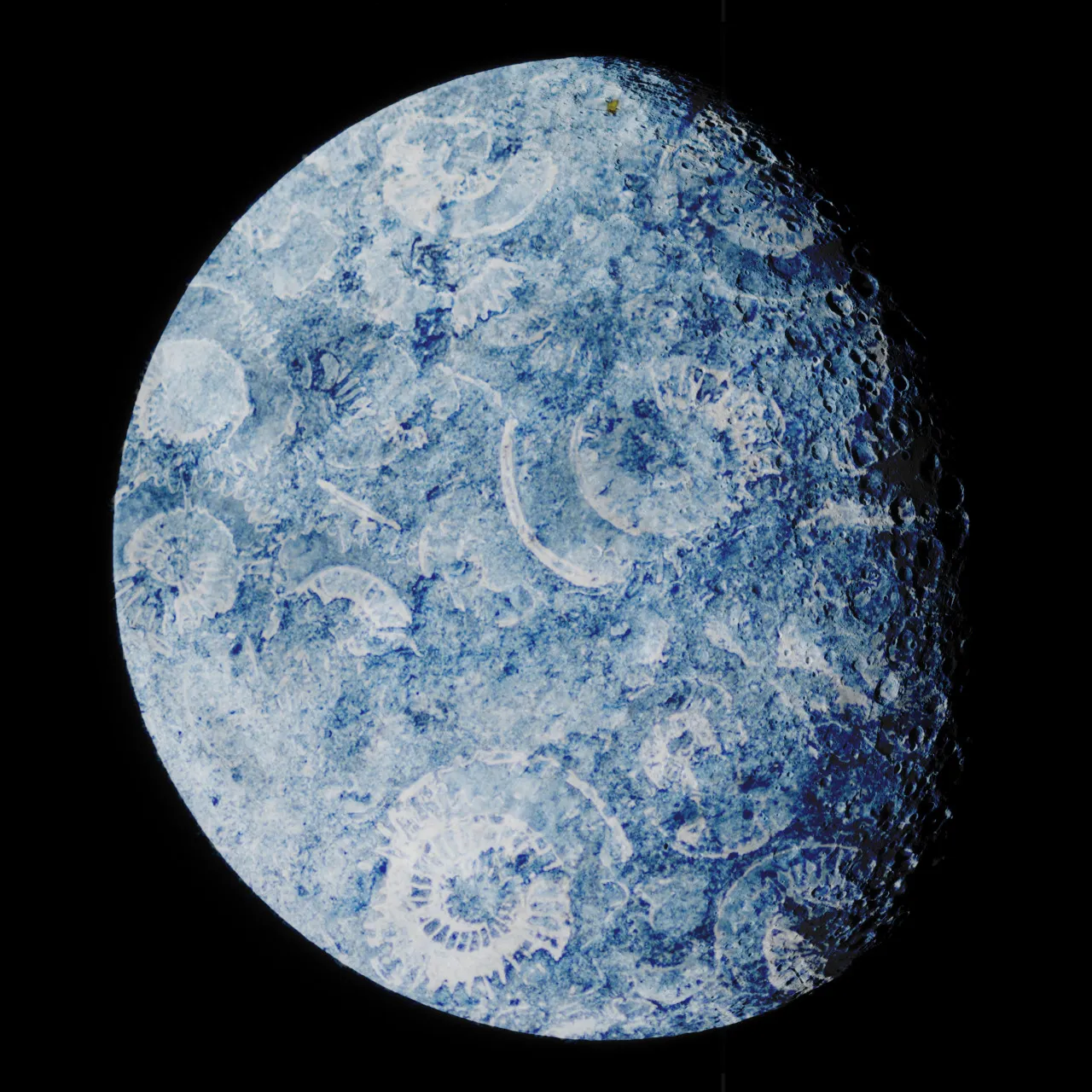 Blue Fossil Moon - by Outerground (ammonites at Lyme Regis & photo of the Moon)
Blue Fossil Moon - by Outerground (ammonites at Lyme Regis & photo of the Moon)
A few years ago I had visited the Jurassic Coast as part of a holiday in the county of Dorset and I wasn't disappointed. I found many fossils in lots of different locations. Dinosaur bones to my amazement just lying around on the beach at Lyme Regis. I bought some very nice Belemnite and Bivalve specimens in the fossil shops at Charmouth and on a tip from a friend of my Father-in-law, found ammonites in the mud shale at Seaton. Another tick off my endless list of things to do / see / collect. I'd always been in awe of giant ammonites and I was satisfied to find a handful of poorly preserved yet nonetheless beautiful small specimens, not least because I could actually transport them home... and display them, in pride of place on top of my cabinet of curiosities.
 Lyme Regis Rock Pools - Jurassic Coast, Dorset by Outerground
Lyme Regis Rock Pools - Jurassic Coast, Dorset by Outerground
The Room of Curiosities
I was in the West Country recently with my family and we bumped into a bloke, (as you do in small seaside towns) carrying a rusty old garden gate. He was a friendly chap and my Father-in-law seemed to know him quite well. It turned out this was the Geologist. Lady Serendipity made sure I bumped into him again no less than half an hour later, this time he was carrying a money plant. Being fond of succulents and the Crassula family, we got chatting. I mentioned that I'd heard about his collection and expressed an interest in seeing it. He very kindly offered to show it, If I had time during our busy week of beach trips, days out and seaside fun with the kids. The very next day he knocked on the door and asked when was convenient. We agreed 11am the following morning. As you can imagine, this was the equivalent of an invite to a private museum and a very exciting invitation.

A Very Private Museum
I knew it was going to be a worthwhile visit. We were led to a small study at the back of the house and entered what looked like a backroom at the Natural History Museum. Full of items, I quickly scanned around to see cabinets of mineral specimens, palaentological and archaeological specimens in addition to books, exotic ornaments, pictures and a desk with what seemed like a carefully selected collection of objects, laid out on a printed cloth. We were going to get the VIP tour and I felt honoured to see this private collection in detail. The specimens were mostly things that had been found throughout the years and I guessed there may have been the odd purchase in their too, like all good museum collections.

Reverse Helix Mollusc
The first objects we were shown was a pair of Whelk Shells. One was brown and rather old looking, the other was white and looked quite new. "What was different about them?" we were asked. Apart from the fact that one looked really old and was slightly larger, it was a mirror image of the other. It's helix was reversed. Correct. This wasn't actually a fossil yet. Although 2 million years old, it was naturally a very hard substance, time and circumstance hadn't had a chance to mineralise it; turn it into stone. This specimen was a mutation and one that would have meant it couldn't mate. (it's shell being the opposite spiral would have meant it would have found bringing it's reproductive parts together with another of it's kind somewhat impossible).. quite sad, a dead end perhaps, but he added that it had, in it's own time, become it's own and quite successful species. An excellent start to what would become a fascinating couple of hours and I couldn't help but feel a bit of compassion for the 2m year old snail.

A Mammoth Tooth & a piece of tusk.
The tooth was immediately recognisable and we all correctly identified it. We didn't guess that the tooth was from a juvenile. During the last Ice Age when sea levels were lower, the UK was part of the European Continent. Mammoths roamed what is now the North Sea and fishermen often dredge up teeth and tusks in their nets.

A curious lump of brown stone
was then handed to us. None of us were sure what it could be. It was an unidentified lump of fossilised bone, possibly part of an Elephants Knee !
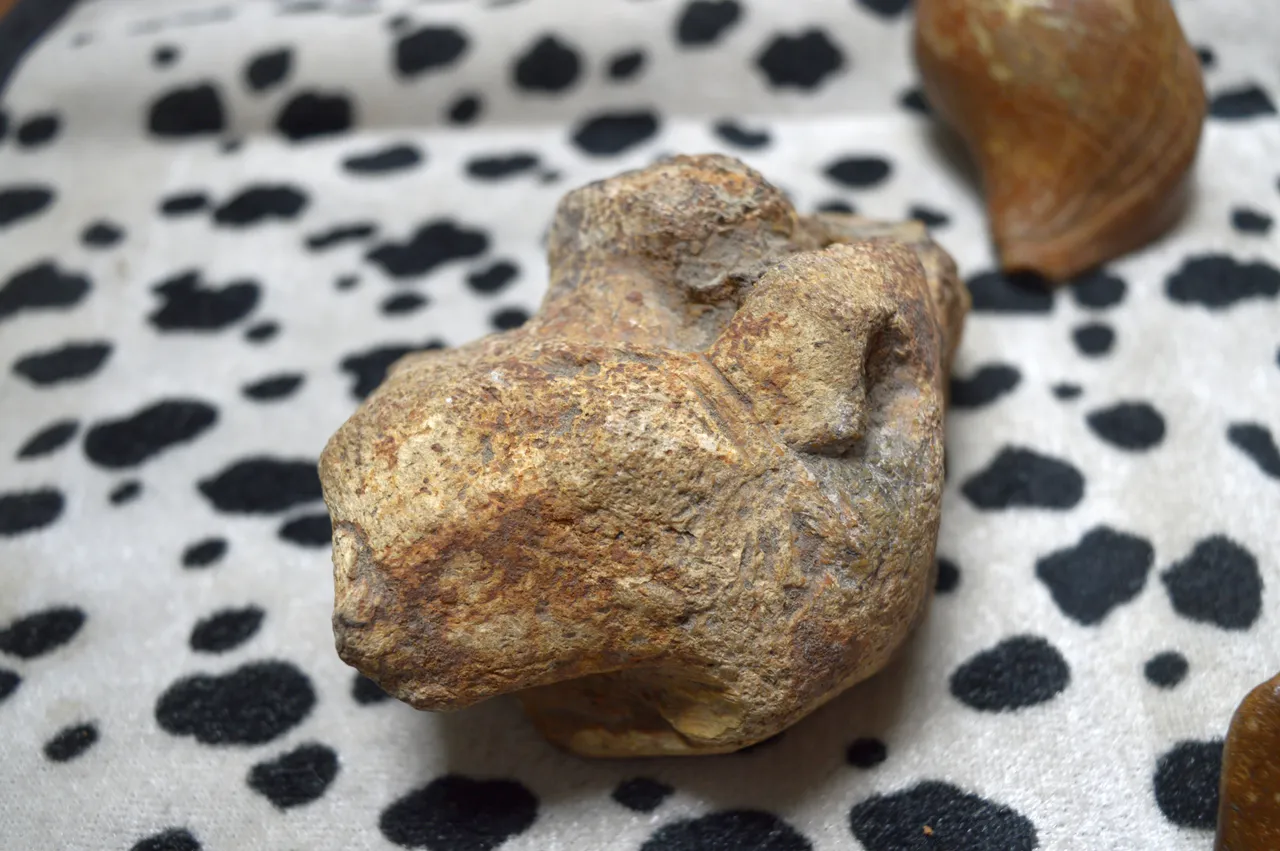
A Mastodon Tooth
The next specimen was impressive. I immediately thought Shark Tooth. Incorrect. It was in fact a Mastodon tooth. Perfectly preserved, it was razor sharp and with the bite of a very large beast behind it. Elephants don't eat meat ? The Mastodon had very sharp molars for ripping and tearing tough vegetable matter. Fun Fact !

Fossilised Faeces
This was kind of an easy one. It looked like a piece of smelted bronze, (in the shape of a pooh) and we didn't have too much trouble identifying it. Difficult to tell what kind of animal had excreted it, but it was a firm favourite of mine so far. Smooth and pooh shaped, apparently fossilised pooh is quite common.

Animals tend to do a lot of pooh and some of it inevitably falls into the mud to be preserved forever. It can be a useful (s)tool of discovery. Dinosaur pooh, another type of fossilised faeces (coprolites) are important in the fossil record. A goof specimen can help palaeontologists reconstruct ancient dinosaur behaviours, giving clues about their diet, lifestlye & environment.
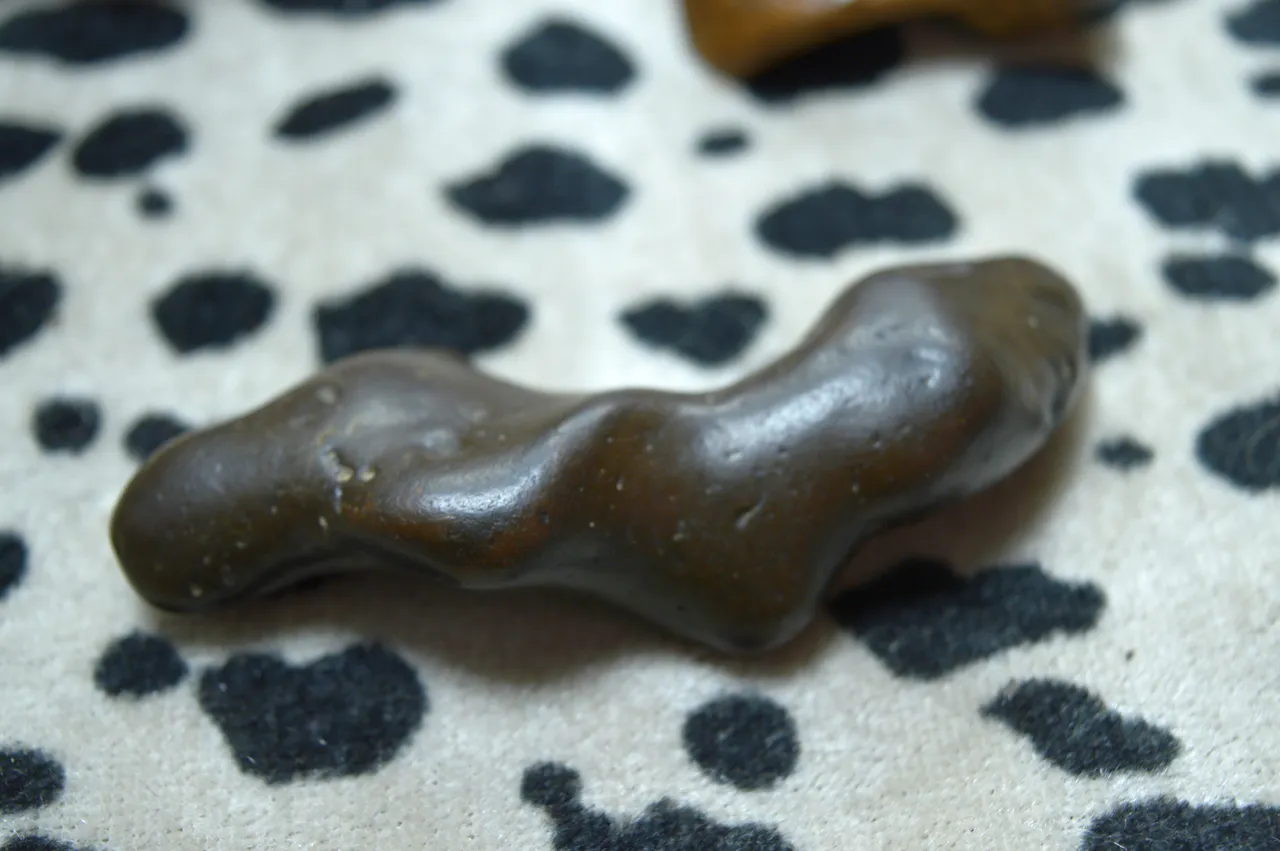
Ancient Sponge
One of the most beautiful fossils we were shown was a sponge which we would normally think of as a soft and pliable lifeform. I thought it looked like Fungi and we were all impressed at the fine detail and shape preserved in this unique specimen. It almost looked like it was still a living specimen or at least a very fine plaster cast.

The Evolution of the Devil's Toe Nails
This was quite a special series of fossils and one which I immediately recognised from my own collection. I incorrectly remember them as Dragon's Claws and have quite a few, collected from a lakeshore in Leicestershire. This collection was quite something to behold. Evolution in action. On the left, the familiar shape of a filter feeding shellfish. The extinct Gryphaea. As the collection was laid out from left to right we could chart it's evolution over time. Starting from a free floating creature bobbing along at the bottom of the sea, it slowly began to flatten out and eventually developed an anchor, attaching itself to something solid like a rock, in a form which eventually became a (now extinct) Oyster.
I'm kind of guessing here that this evolution probably occurred as a result of the creature finding itself in nutrient rich tidal currents. It would have probably been difficult for a free floating creature to fully exploit the nutrients in it's wake for long, being eventually washed downstream and into clearer waters, but once anchored in a prominent position, could flourish taking full advantage of it's enriched and reliable environment. As my conceptual example, I'm thinking of the Mussel beds in the Menai Straits between the Island of Anglesey and The mainland of North Wales, home to some of the most productive in European waters. Swimming's probably overrated, for a shellfish anyway, but don't tell the clams I said that.

The Echinoderm Mouth Anus Swap
The next fossils we looked at were another piece of evolution in action. This time, beautifully smooth sea urchins, which looked as real (if more solid) than ones you may find scuba diving / snorkeling or washed up or on a beach today. It was a before and after piece of detective work. In specimen one, the Mouth and Anus reveal a shallow burrowing lifestyle (in the Benthic zone). As the creature evolved a deeper burrowing habit it literally swapped the location of it's anus and mouth to suit the different environment. We looked at an illustration of the different burrowing positions in one of the many books on the shelf of knowledge.. which helped clear things up a bit !

I still find it difficult imagining how such extremities can actually change place, even over really long periods of time ! Evolution is a quite randomly mutational affair, conferring small but distinct advantages on the mutant. Evolution doesn't have a habit of going backwards and it's incremental by nature. The mind boggles as to the vast wonder of nature's great mechanism of adaptation by chance. They were again like the sponge, almost perfect plaster cast examples of a modern day similar creature. The preservation of specimens like these is truly awesome given the amount of geological time they have survived. In this case, the Cretaceous period, some 80 million years ago.
We were shown some other Sea Urchin fossils. This one below (right) sitting next to a modern Sea Urchin shell (left) shows the clarity of detail in it's preservation. If you were to place this back on the sea bed, would you even notice it was an ancient solid object ?
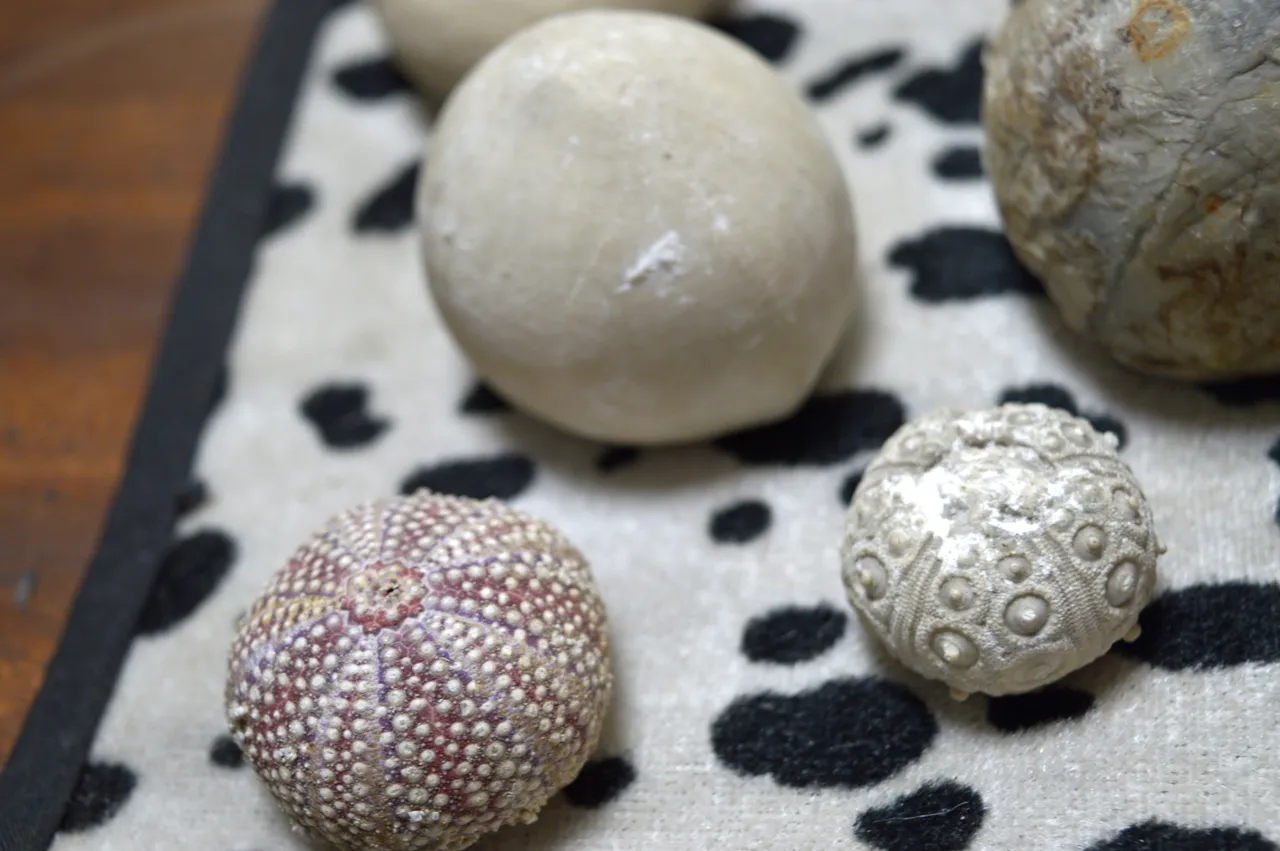
The Humble Belemnite - Ancestor of the Squid
I've always been really interested in Cephalopods. Octopus and Cuttlefish in particular are perhaps the closest we have to alien species here on Earth. With amazing photochromatic communication abilities and advanced intelligence, they offer us a glimpse as the extent of the differences in who or what we may meet out in the cosmos one day. The humble Belemnite fossil is so common that you find them in fossil shops for mere pennies, but this was quite a big specimen. Imagine a squid and this is it's Great.....Great.....Grandmother. I first encountered a model of them in a diorama in the Museum of Liverpool when I was a child. It was a dark underwater scene, (opposite the trilobite display) and they had great big eyes. I was both intrigued yet slightly disturbed by them and always stopped to look into their world. I have a few small belemnites in my own collection, yet I have never actually found one.

When Trilobites Ruled the Seas
Who doesn't love a Trilobite ? They loomed large in my imagination as a child. I used to experiment by placing Woodlice in water to see if I could recreate my own living diorama of the Cambrian period. Curiously enough, they lasted quite a while in water, but this was merely due to the way they breathe through pores, nowhere near as long as the 270 million years they marched in their many splendoured coats. Although I was disappointed to find out later that Trilobites were actually more closely related to Scorpions and Spiders. nonetheless, a discussion about fossils can hardly ignore these noble beasts who dominated the ocean floor for countless millions of years when we were far from becoming even a mischievous twinkle in nature's eye. I'm currently reading Trilobite by Richard Fortey which as it's title suggests, takes the humble extinct beast as it's subject.
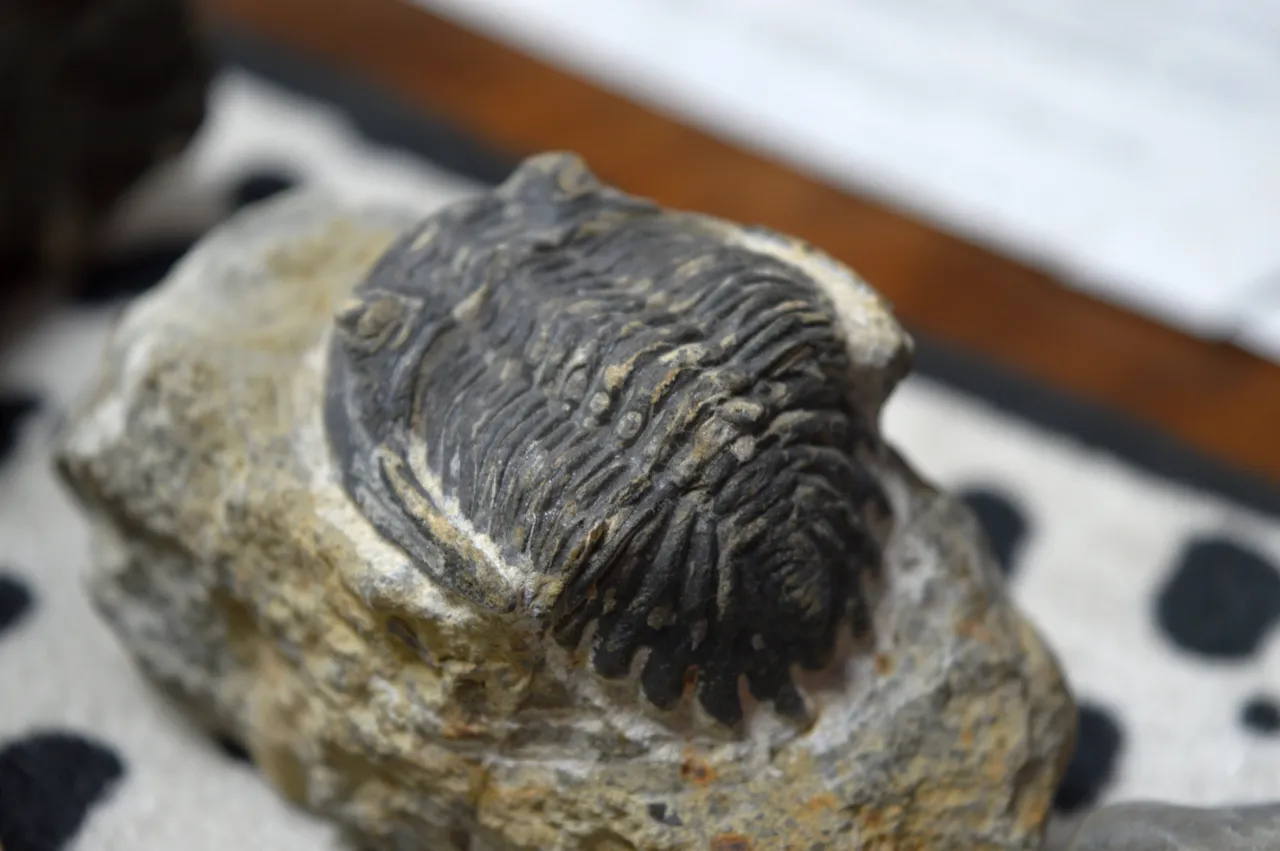
We saw a couple of decent sized specimens, black, crisp, almost living creatures, carved out from the surrounding rock. This one like many other's had it's tail down upon it's demise so that we can see it had a certain articulation, which we might have otherwise not attributed to it, had we not seen it's proof. With prominent eyes and an armoured shell, it was the tank of bygone times. We saw another specimen which was bigger and also with it's tail down. All good museums have multiple specimens for comparison.

What is This ?
A beautiful little fossil, no bigger than a couple of fingers. I thought it looked a bit like a tiny turtle shell. It's shape was on the tip of my brain. Matt correctly guessed it. I was quite impressed. A crab. Once it was identified, it was easy to see it's shape and little claws. This became my new favourite fossil so far.

Priceless moments.* apologies in advance for any factual inconsistencies contained in this article as it was written from memory, I hadn't taken notes due to taking photographs.)

For those of you who got this far reading... congratulations and thanks for reading. There is a bonus prize of 3SBD for the first correct identification of this gorgeous little fossil above. No clues :)